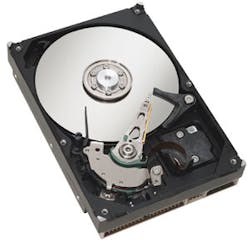As anyone shopping around for a video management system (VMS) can tell you, the options to consider can seem endless. Most major video surveillance vendors - and dozens of smaller firms - offer systems with features ranging from the simplest of camera/DVR selection to full-scale integration with access control, intrusion and building management systems as well a host of other niche functions that allow the VMS solution to function as a command-and-control application. Even at the most basic levels, VMSs have seen advancements in several areas that have greatly improved their functionality, storage and user experience.
Despite the explosive growth of the IP camera market over the past few years, end-users with DVRs and analog cameras still represent a significant majority of the market. While undoubtedly interested in the high-resolution images offered by megapixel cameras, these users need the ability to view, control and manage recorded video from existing DVRs and analog cameras as well as NVRs and IP cameras - without requiring separate systems for each. These users also need a robust and reliable platform that can maximize their existing analog infrastructure while remaining a viable technology many years into the future.
These requirements have borne new VMS solutions that bring together recorded video from DVRs and NVRs and associated analog and IP video streams into one cohesive user interface. This eliminates the multiple systems, screens, monitors and workstations that many users are forced to toggle between in order to navigate within the different environments.
Precious time can be lost when a user needs to switch between multiple screens to find the cause of a motion alarm. A unified interface offers a more comprehensive picture of the overall surveillance landscape as well as reduced costs in training, maintenance and software updates.
Tech-Savvy Searching
Another significant benefit of unifying these different environments is the ability to perform forensic searches using new streaming-based technology. This approach has many advantages over older, clip-based technologies, including dramatically faster search results using metadata and more immediate access to a range of cameras, DVRs and NVRs during a forensic investigation.
Using streaming technology, systems can build an ongoing database of the video metadata, which enables motion-based searches for vehicles, people, objects or other anomalous events. This provides huge benefits over clip-based technologies that rely on a more traditional frame-by-frame review of the video.
Consider the following example: A security officer is investigating a tripwire alarm triggered at 10:30 a.m. In order to provide context to the incident, a clip-based system prepares a clip with 30 seconds on either side of the alarm for download - the only problem is that the perpetrator tripped the alarm and then ducked behind a tree for the next 40 seconds. In this scenario, the only way to properly determine the outcome of the incident would be to continually download clips until the clip with the right information is located. Until the operator has searched exhaustively and then located the incident on video, the security department can never be certain that enough clips have been downloaded to make a conclusive determination. And, depending on your network speed, each video clip can take an average of one minute to download for review.
Using a streaming-based approach, the VMS event management system can take the user instantly to the camera in question, where the user can simultaneously watch live and recorded video, making it possible to instantly rewind an image and switch back and forth from live and recorded video.
The Next Viral Video Sensation
Sharing video has become a viral phenomenon. In January, a now infamous video was posted to the Internet showing a woman walking into a fountain at a shopping mall while texting. In our highly connected and tech savvy world, videos are e-mailable, exportable, and easy to post online for close friends or the entire globe to enjoy. Being able to enact strict policy management rules is becoming a requirement to protect a brand and company's reputation. Well-designed VMS solutions enable end-users to limit access to certain areas of video or to certain functions of the system. Whether it's limited views or restricted access to sensitive areas of a facility, these VMS rules can help thwart rogue Internet postings or other uses outside of the security system.
Take the example of one hospital security director who received a call from a board member who saw surveillance footage of an incident between a doctor and nurse posted on the Internet. The security director was able to narrow it down to five possible members of the security staff who would have been able to access and export the video clip; but that "after the fact" conclusion did not help the hospital avoid the embarrassment and possible liability.
Standardizing on H.264
It is clear that H.264 is becoming the industry's standard compression technology because of its highly efficient methods of transmitting video and maximizing available storage. Its use is fairly widespread in terms of being deployed in VMS solutions aimed at both low- and high-end applications.
H.264 solves many IT complaints that video requires excessive bandwidth to transmit from the camera to the NVR. In part, H.264 is the solution to bandwidth and storage issues that accompany the rise in high-definition, megapixel cameras. The trade-off to H.264's benefits is the additional processing power needed to code and decode the video. This exists both on the camera as well as within the VMS.
Understanding the total number of H.264 video streams that can be displayed concurrently is critical. Newer workstations have more powerful CPUs and higher performance capabilities; however, H.264 performance is greatly impacted by the manufacturer's implementation and video display technology. End-users need to ask questions such as: how many videos can be simultaneously displayed; what is the resolution for each camera, 4 CIF or 1080p; and, what is the fps (frames per second) of each camera.
To drive more H.264 video at higher resolutions and at real-time fps, some VMS designers have taken advantage of an often underutilized resource - the video cards on each PC workstation. The new Microsoft Windows Presentation Foundation (WPF), a graphical system for rendering user interfaces in Windows-based applications, provides a unique opportunity. VMS solutions built on this framework are able to divide the video rendering workload between the PC's CPU and the Graphical Processor Unit (GPU), which powers the video card. Using WPF in a VMS, the intensive video processing - video bit and texture mapping, skeletal frame and image quality - is done on the GPU/video card, leaving the CPU free to decode the video.
VMS systems designed using the WPF architecture can also offer other functionalities such as the ability to have multiple surveillance tabs for mixing live and recorded video, 'Snap and Dock' windows, and more.
While it is important that newer VMS solutions be able to handle the latest in compression technologies, the realities of the market are that most installations are upgrades to existing surveillance systems in various stages of migration to IP, vs. a greenfield installation unencumbered by any legacy technology.
A good VMS should not only be able to flawlessly handle megapixel technology, but also sufficiently and simultaneously leverage other existing codecs - MPEG, MPEG4 - to give users a comprehensive and cohesive view of their surveillance system.
Building with the right parts
No other part of a video management and recording solution takes more abuse than the actual hard drives that physically record the video data. In fact, hard drives are the most common point of failure in a surveillance system. Most VMS solutions are designed to accommodate the hot swapping of hard drives to replace a defective drive or substitute a larger hard disk for additional storage - a feature seen as crucial to enterprise storage requirements.
Most solutions employ SATA drives, known for their speed, storage densities and low cost per gigabyte for near-line storage functions, like archiving and backups. In an average corporate, non-video environment, these drives function well as an 8 a.m. to 5 p.m. solution that can handle documents, images and other items found in the typical business environment. Adding redundancy with additional drives can help alleviate data loss due to a hard drive failure, but it also adds additional costs and complexity to the overall system.
With video's data-intensive, 24/7 requirements, however, higher-grade components are beginning to creep their way into today's enterprise-grade NVRs. Tier 2 Near Line SAS drives, which are designed for that around-the-clock usage and the demands of high bit rate and constant throughput, are one solution to stem the flow of hard drive replacements over the life of the system.
Command and Control
Ever growing in sophistication and functionality, VMS solutions are also becoming the central management point in an organization for many security-related functions, such as access control, intrusion and fire. A single interface that brings together the collective consciousness of an organization's security and life safety functions can eliminate duplications in hardware and reduce strain on personnel.
Instead of toggling between a VMS window and an access control system's screen to verify a false alarm at a door, a single interface displays the flashing alarm icon as well as a live camera view of the door, in one screen. Alarm management and real-time reporting are just two basic functions that can be melded together into a unified management system.
Many of these systems on the market today offer the opportunity for custom integrations with a variety of different types of sensors, such as lighting, interior environmental controls, weather or tornado warning sensors or traffic management equipment. These systems are often aimed at the high end of the market due to their sophisticated architecture and feature sets.
VMS solutions can form the heart of a high-level command-and-control system, but end-users need to ensure the functions best suit their needs. Unifying legacy analog and IP video with smart, efficient search capabilities and state-of-the-art video transmission and storage components provides an excellent foundation for a complete security management solution.About the Author
David Jackson
David Jackson, senior product manager for American Dynamics, oversees the IP video recording product portfolio. He has been in the video and computing industries for 15 years. Jackson can be reached at [email protected].


